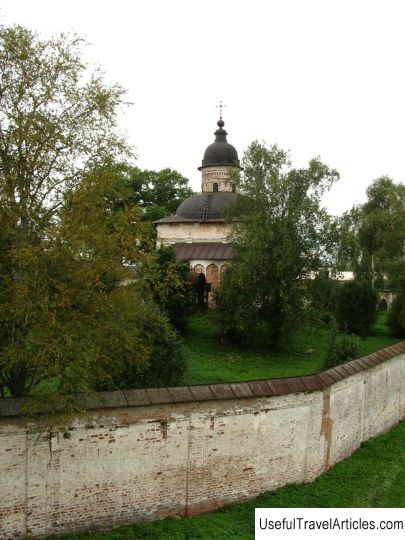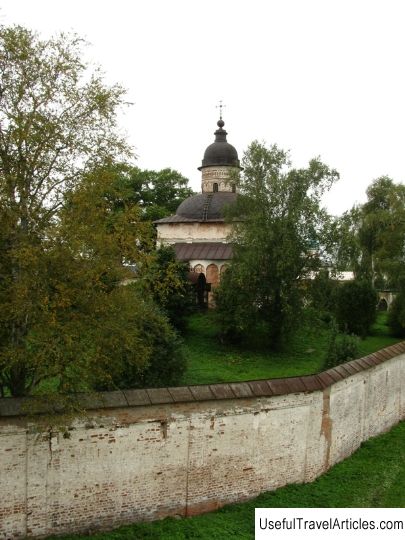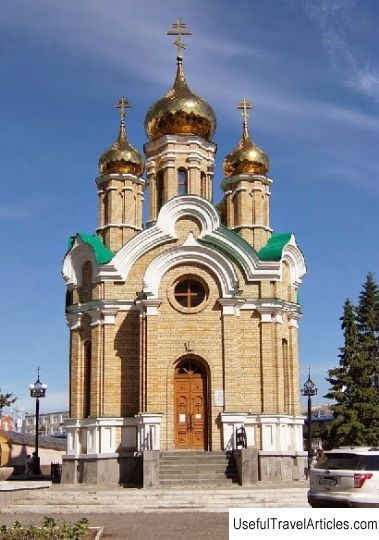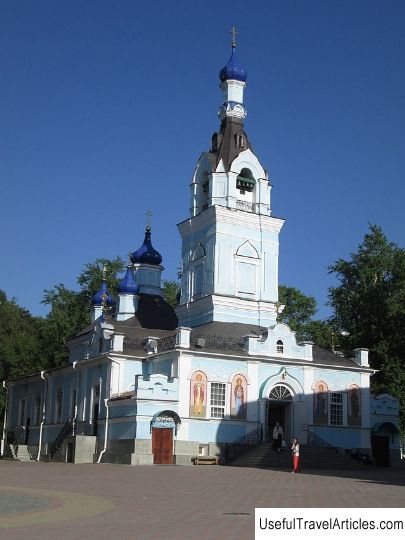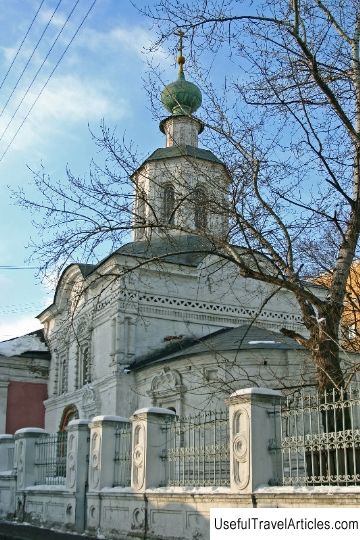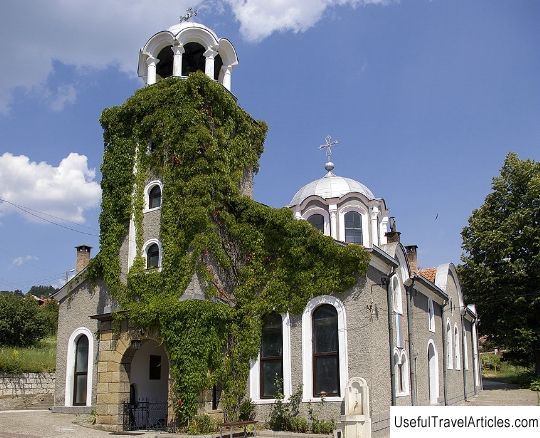Church of John the Baptist in Roshchenye description and photos - Russia - North-West: Vologda
Rating: 7,9/10 (3844 votes) Church of St. John the Baptist in Roshchenye description and photos - Russia - North-West: Vologda. Detailed information about the attraction. Description, photos and a map showing the nearest significant objects. Photo and descriptionThe famous Church of St. John the Baptist is located in the southeastern side of the square, formerly called the Spasskaya Square, on which there were three churches: the churches of Athanasius of Alexandria, St. Nicholas the Wonderworker and the All-Grad Savior Cathedral. At the moment, the church is located in a kindergarten named after Pushkin in the city of Vologda. The church was previously called John the Baptist in honor of the main throne of the cold temple, named in the name of the Beheading of John the Baptist. The second name of the church sounded like "Roshchenskaya", which meant the place where it was previously located - Roshchenie - most likely this name was translated as "grove" in the old days. This zone stretched from the Church of St. John the Baptist and to the south straight to the Church of St. Cyril of Belozersky, which also bore the name "Roshchenskaya". The oldest mention of the existence of the Church of St. John the Baptist, while still being made of wood, dates back to 1618. Neither the time nor the reason for the initial development of this temple has survived to this day. Initially, the wooden church built was not called the Forerunner, but the Alekseevskaya, most likely after the name of the original throne, consecrated in honor of the Moscow Metropolitan Alexy (later the throne was transferred to a warm and already stone church). It was this name of the church that was mentioned in the temple books, as well as other documents of the 17th and first quarter of the 18th century, up to 1728 - from that time the church began to be called Ioannopredtechenskaya. At that time, the church was one of the richest and most visited temples in the whole of Vologda, after all, there were 77 parish courtyards at the church, the number of which exceeded the largest part of the parish churches, and every year it also paid an especially large church tribute. The church was wooden until 1710 and by the end of the 17th century it had three separate buildings: two churches - a warm one consecrated in the name of Metropolitan Alexy and a cold one, consecrated in honor of John the Baptist, as well as a bell tower. During a thunderstorm on May 26, 1698, the church burned down, and the bell tower was cut down during a fire because of its proximity to the church. The foundation of the already stone church in the name of John the Baptist, with the chapel of Moscow Metropolitan Alexy, began to be laid on May 23, 1710 of the year; the end of the construction of the church, as well as the date of its consecration, are unknown. In 1851, the fence made of wood and the surrounding church was completely replaced by a stone one with a pair of small octagonal towers at the western corners and iron gratings. The building of the already built stone Church of the Baptist had two one-story departments: warm and cold, and was also in close connection with the adjoining bell tower ... The bell tower itself was attached to the warm section of the building, which, in turn, adjoined the western part of the wall of the cold section of the church building. Until 1856, the church bell tower was low and had a hipped roof top. This year, parishioner Ledentsov allocated funds for the alteration of the bell tower, which was dismantled and largely built on, and the church tent top was replaced by a new one with a high spire with a pointed end. In the cold part of the church of John the Baptist, there was a throne consecrated in honor of the Beheading of John the Baptist, the ancient dispensation of which dates back to the reign of Ivan the Terrible, in honor of the namesake, which was usually celebrated in the summer of August 29. The church frescoes, judging by the surviving fragment on the southern wall of the temple, date back to 1717, but their author is unknown. According to stylistic and iconographic features, many researchers believe that the authors of the paintings were Yaroslavl masters. The dome of the church depicts "Fatherland", and on the octagonal vault there is an illustrative series of "Creed". The registers of the walls located at the top are dedicated to the pictures of the earthly life of Christ, and below is the composition of the apostolic acts, containing scenes of the torment and death of all the apostles for their Christian faith. The restoration of the frescoes was carried out in the years 1856-1859.        We also recommend reading Castle Chora description and photos - Greece: Kalymnos Island Topic: Church of John the Baptist in Roshchenye description and photos - Russia - North-West: Vologda. |
